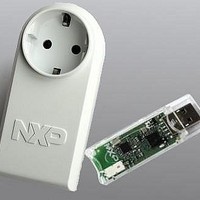OM13006,598 NXP Semiconductors, OM13006,598 Datasheet - Page 241

OM13006,598
Manufacturer Part Number
OM13006,598
Description
BOARD EVAL EM773 METER EU PLUG
Manufacturer
NXP Semiconductors
Type
Other Power Managementr
Specifications of OM13006,598
Design Resources
Plug Meter Schematics, Gerber Files USB Dongle Schematics, Gerber Files
Main Purpose
Power Management, Energy/Power Meter
Embedded
Yes, MCU, 32-Bit
Utilized Ic / Part
EM773FHN33,551
Interface Type
USB
Maximum Operating Temperature
+ 150 C
Operating Supply Voltage
1.8 V to 3.6 V
Product
Power Management Development Tools
Lead Free Status / RoHS Status
Lead free / RoHS Compliant
Primary Attributes
-
Secondary Attributes
-
Lead Free Status / Rohs Status
Lead free / RoHS Compliant
For Use With/related Products
EM773, OL2381
Other names
568-6681
- Current page: 241 of 310
- Download datasheet (6Mb)
NXP Semiconductors
UM10415
User manual
20.3.3.6.1 Exception entry
20.3.3.6 Exception entry and return
Assigning a higher priority value to IRQ[0] and a lower priority value to IRQ[1] means that
IRQ[1] has higher priority than IRQ[0]. If both IRQ[1] and IRQ[0] are asserted, IRQ[1] is
processed before IRQ[0].
If multiple pending exceptions have the same priority, the pending exception with the
lowest exception number takes precedence. For example, if both IRQ[0] and IRQ[1] are
pending and have the same priority, then IRQ[0] is processed before IRQ[1].
When the processor is executing an exception handler, the exception handler is
preempted if a higher priority exception occurs. If an exception occurs with the same
priority as the exception being handled, the handler is not preempted, irrespective of the
exception number. However, the status of the new interrupt changes to pending.
Descriptions of exception handling use the following terms:
Preemption — When the processor is executing an exception handler, an exception can
preempt the exception handler if its priority is higher than the priority of the exception
being handled.
When one exception preempts another, the exceptions are called nested exceptions. See
Section 20–20.3.3.6.1
Return — This occurs when the exception handler is completed, and:
The processor pops the stack and restores the processor state to the state it had before
the interrupt occurred. See
Tail-chaining — This mechanism speeds up exception servicing. On completion of an
exception handler, if there is a pending exception that meets the requirements for
exception entry, the stack pop is skipped and control transfers to the new exception
handler.
Late-arriving — This mechanism speeds up preemption. If a higher priority exception
occurs during state saving for a previous exception, the processor switches to handle the
higher priority exception and initiates the vector fetch for that exception. State saving is
not affected by late arrival because the state saved would be the same for both
exceptions. On return from the exception handler of the late-arriving exception, the normal
tail-chaining rules apply.
Exception entry occurs when there is a pending exception with sufficient priority and
either:
When one exception preempts another, the exceptions are nested.
•
•
•
•
there is no pending exception with sufficient priority to be serviced
the completed exception handler was not handling a late-arriving exception.
the processor is in Thread mode
the new exception is of higher priority than the exception being handled, in which case
the new exception preempts the exception being handled.
All information provided in this document is subject to legal disclaimers.
Rev. 1 — 10 September 2010
for more information.
Section 20–20.3.3.6.2
Chapter 20: Appendix EM773 ARM Cortex-M0 reference
for more information.
UM10415
© NXP B.V. 2010. All rights reserved.
241 of 310
Related parts for OM13006,598
Image
Part Number
Description
Manufacturer
Datasheet
Request
R
Part Number:
Description:
NXP Semiconductors designed the LPC2420/2460 microcontroller around a 16-bit/32-bitARM7TDMI-S CPU core with real-time debug interfaces that include both JTAG andembedded trace
Manufacturer:
NXP Semiconductors
Datasheet:

Part Number:
Description:
NXP Semiconductors designed the LPC2458 microcontroller around a 16-bit/32-bitARM7TDMI-S CPU core with real-time debug interfaces that include both JTAG andembedded trace
Manufacturer:
NXP Semiconductors
Datasheet:
Part Number:
Description:
NXP Semiconductors designed the LPC2468 microcontroller around a 16-bit/32-bitARM7TDMI-S CPU core with real-time debug interfaces that include both JTAG andembedded trace
Manufacturer:
NXP Semiconductors
Datasheet:
Part Number:
Description:
NXP Semiconductors designed the LPC2470 microcontroller, powered by theARM7TDMI-S core, to be a highly integrated microcontroller for a wide range ofapplications that require advanced communications and high quality graphic displays
Manufacturer:
NXP Semiconductors
Datasheet:
Part Number:
Description:
NXP Semiconductors designed the LPC2478 microcontroller, powered by theARM7TDMI-S core, to be a highly integrated microcontroller for a wide range ofapplications that require advanced communications and high quality graphic displays
Manufacturer:
NXP Semiconductors
Datasheet:
Part Number:
Description:
The Philips Semiconductors XA (eXtended Architecture) family of 16-bit single-chip microcontrollers is powerful enough to easily handle the requirements of high performance embedded applications, yet inexpensive enough to compete in the market for hi
Manufacturer:
NXP Semiconductors
Datasheet:

Part Number:
Description:
The Philips Semiconductors XA (eXtended Architecture) family of 16-bit single-chip microcontrollers is powerful enough to easily handle the requirements of high performance embedded applications, yet inexpensive enough to compete in the market for hi
Manufacturer:
NXP Semiconductors
Datasheet:
Part Number:
Description:
The XA-S3 device is a member of Philips Semiconductors? XA(eXtended Architecture) family of high performance 16-bitsingle-chip microcontrollers
Manufacturer:
NXP Semiconductors
Datasheet:

Part Number:
Description:
The NXP BlueStreak LH75401/LH75411 family consists of two low-cost 16/32-bit System-on-Chip (SoC) devices
Manufacturer:
NXP Semiconductors
Datasheet:

Part Number:
Description:
The NXP LPC3130/3131 combine an 180 MHz ARM926EJ-S CPU core, high-speed USB2
Manufacturer:
NXP Semiconductors
Datasheet:

Part Number:
Description:
The NXP LPC3141 combine a 270 MHz ARM926EJ-S CPU core, High-speed USB 2
Manufacturer:
NXP Semiconductors

Part Number:
Description:
The NXP LPC3143 combine a 270 MHz ARM926EJ-S CPU core, High-speed USB 2
Manufacturer:
NXP Semiconductors

Part Number:
Description:
The NXP LPC3152 combines an 180 MHz ARM926EJ-S CPU core, High-speed USB 2
Manufacturer:
NXP Semiconductors

Part Number:
Description:
The NXP LPC3154 combines an 180 MHz ARM926EJ-S CPU core, High-speed USB 2
Manufacturer:
NXP Semiconductors

Part Number:
Description:
Standard level N-channel enhancement mode Field-Effect Transistor (FET) in a plastic package using NXP High-Performance Automotive (HPA) TrenchMOS technology
Manufacturer:
NXP Semiconductors
Datasheet:










